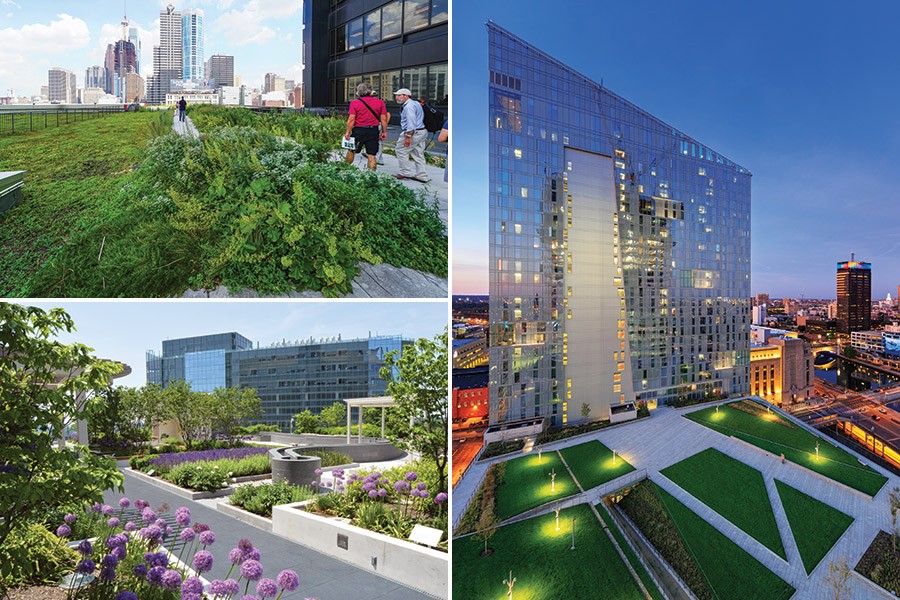Why Are Green Roofs Popping Up All Over Philly?
One local expert explains.

Clockwise from top left: PECO’s green roof, courtesy of Rick Scaffidi; Cira Green, courtesy of Albert Vecerka; the Buerger Center at CHOP, courtesy of Roofmeadow.
Charlie Miller, engineer and founder of Mount Airy-based Roofmeadow, has become Philly’s go-to green roof guy. Here, he breaks down why they’re the hottest new accessory for downtown buildings.
First and foremost, green roofs manage storm water.
“Green roofs are very thin and cover broad areas, changing the response of surface to runoff in a way that’s more like normal runoff conditions,” says Miller. When you green the roof with a layer of plants and the dirt they root in, rainfall is absorbed and kicked back into the atmosphere (via a process called evapotranspiration), not just drained into city sewers.
And managing storm water is better for the city … and bottom lines.
Like many cities, Philly has a combined sewer system, so runoff and toilet water flow into the same treatment plant. Heavy rainfall can overwhelm this system, and that, Miller explains, leads to “all that gunk getting dumped directly into the Delaware, the Schuylkill, or the nearest overflow point.” This damages ecology and, well, it’s gross. That’s why the city provides incentives for installing green roofs.
Plus, they can double as public spaces.
CHOP’s Buerger Center for Advanced Pediatric Care, Cira Green and PECO, all projects Roofmeadow was involved with, are great examples of green roofs as parks. Cira Green even has community programming, with a beer garden, rooftop yoga and more. Attracting people to the space can be a boon for property and business owners. “Based upon the experience at Cira Green … Philadelphia could be a bellwether for this sort of very green elevated urban park,” says Miller.
» See Also: The Philadelphian’s Guide to Rooftop Living
Published as “The Air Up There: Green Roofs, Explained” in the May 2018 issue of Philadelphia magazine.


